Bukit Brown : Documenting New Horizons of Knowledge
Location: NLB 9th floor from now until 10 October’14 and thereafter it will travel to other regional libraries.
The exhibition was officially opened on Saturday 19 July,2014 by MOS (Ministry of National Development) Desmond Lee.
It represents almost one and half years of research and working the ground documenting some 4,153 tombstones which are affected by the building of a new highway across Bukit Brown, by a team under the leadership of Dr. Hui Yew-Foong, an anthropologist with ISEAS.
We have observed the team hard at work over these years, joined some of them during Qing Ming and exhumations as observers and friends of the family of descendants, and the exhibition is a comprehensive and compact expression of what they have uncovered, shared with the public with insight and interesting artefacts , enhanced by new technology. We recommend it as a “must see” and “ground breaking” for insights shared of customary practices and traditions of burial customs and respect for ancestors.
An extract from the media release:
Documenting New Horizons of Knowledge” assembles a diverse range of documents,maps, photographs and objects to demonstrate how a cemetery can open a window to Singapore’s historical past and cultural present. Through a multi-disciplinary approach employing cutting-edge methods, techniques and technology, the exhibition will bring to the fore new horizons of knowledge unveiled through the documentation of Bukit Brown.
The exhibition opens with the origins of the cemetery, as a project of the Municipal Commissioners in early 20th in 1973, will be illustrated through maps and aerial photographs. Next, through explication of tomb inscriptions, tomb typology and the material culture of the cemetery, the exhibition will demonstrate Singapore’s connectivity to the region, China and the world.
While the cemetery is a burial space for the dead, it is also a space for the living at different points of Singapore’s history and ritual calendar. This will be illustrated through the life of kampongs that used to be situated in the vicinity of the cemetery and the life of the cemetery during Qing Ming and the Seventh Month Hungry Ghost Festival.
As data for the graves was collected and organised within a Geographic Information System (GIS) framework, the exhibition will present a Centrepiece where visitors will be able to access data related to specific graves through a map-based database on a touch screen monitor.
Finally, visitors will get a glimpse behind the scenes of documentation work, to get a sense of the different methods, techniques and technologies that were employed in the course of documentation. These range from balloon photography to 3D scanning, from interviewing to filming, and from the work of architects to the work of archaeologists.
****
Highlights of the Exhibition Opening

Dr Hui Yew-Foong, explaining material culture to MOS Desmond Lee during the curator’s walk through (photo Ang Hock Chuan)

Dr. Natalie Pang (NTU) who worked on the IT applications for the centerpiece map demonstrating how it works to MOS Desmond Lee (photo Ang Hock Chuan)
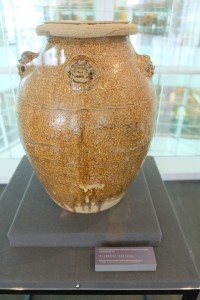
The urn which used to house re-interred remains from other cemeteries to Bukit Brown (photo Raymond Goh)
This urn was used to re-inter bones exhumed from an older cemetery. It was from the grave of Madam Khoo Siok Hui, who died in 1836. Her grave was the oldest among those documented at Bukit Brown. Madam Khoo and her son Chee Yam Chuan were among the early settlers of Singapore. Mr Chee later returned to Malacca and made his fortune in tin mining in Selangor. Today, the Chee Yam Chuan Temple Trust continues to flourish in Malacca and Madam Khoo’s ancestral tablet can be found in the temple. The story behind this family shows the close links between Malacca and Singapore in the early years. It was Raymond Goh who first deciphered the inscription and unraveled the connection.

Treasure trove of jade bracelets worn by the women and traditionally buried with their wearers. (photo Ang Hock Chuan)

Descendant Serene Tan of pioneer Tan Quee Lan, gets one for the album when MOS Desmond Lee sportingly agrees to walk with her to visit her “great great grandfather’s road” ( photo Ang Hock Chuan)

They were accompanied by a entourage of brownies who have been sharing Serene’s journey of reconnecting with her ancestors since Raymond Goh found the Tan Quee Lan cluster re-interred from another cemetery at Bukit Brown (photo Ang Hock Chuan)
A video at the exhibition features Serene Tan and her family observing the first Qing Ming at Bukit Brown in 2012 after Raymond Goh discovered the cluster of Tan Quee Lan tombs, and shows how the cluster underwent a renovation makeover by Serene and her cousin LT Tan who met at Bukit Brown itself. Serene’s story can be read here
The cluster is not affected by highway.

Brownies, academics, descendants, members of the documentation team at the exhibition (photo Khoo Ee Hoon)
“….to everyone who came and supported the launch, and most importantly, supported us and helped us generously with our research over the last 33 months. One of the purposes of the exhibition is to acknowledge all your contributions and I hope it accomplished that.” Dr Hui Yew- Foong, Curator of Exhibition on a FB posting.
Look out for 2 specially curated walks by the Brownies in conjunction with the exhibition in August (English) and September (Mandarin).
Photos taken of the exhibition courtesy of Brownie Ang Hock Chuan on Facebook here
Read more about the exhibition by the Rojak Librarian here
by Norman Cho
In 2011, I discovered the grave of my paternal grandfather, Cho Kim Leong at Bukit Brown Cemetery. Since then, I have been trying to locate the tomb of his father, Cho Boon Poo (Cho Poo), who was laid to rest in Malacca. I had absolutely no clue as to which cemetery he was buried. Bukit Cina and Jelutong cemeteries came to mind but these are huge cemeteries with more than a hundred thousand graves each. They are maintained by the Cheng Hoon Teng Temple but pre-war records are unavailable. It seemed that I had hit a dead-end!
However, miracles do happen. To me, these are little blessings from above. Perhaps, the old man had wanted his descendants to visit him and had influenced how things turned out. It must have been decades since the last time any descendants paid their respects at his tomb. He must have known my sincerity and had helped me along without my knowledge. The breakthrough came in April 2014. A relative whom I had never known, contacted me via Facebook to introduce himself as the maternal great-grandson of Cho Poo, after he had discovered that we have matching ancestors from an online Family Tree software on the internet. 70 year old Vincent Lee was descended from Cho Poo’s eldest son, Cho Kim Choon, while my paternal grandfather, Cho Kim Leong, was the third son. He resides in Australia and was planning a trip down to Singapore in April 2014. He requested my assistance to put him in touch with the relatives in Singapore.
It turned out to be a blessing for me! I talked to my eldest aunt, Rose Cho (88 years old), to ask for the contacts of other relatives from the Cho clan. That was how I found aunt Elizabeth Cho (62 years old), who was the only child from the fifth son, Cho Kim Hock, a famed state badminton player for Malacca in the 1930s. We organised a dinner for our overseas relative and his wife. During dinner, I had a nice chat with Elizabeth – whom the family affectionately calls Bert – about Cho Poo. She told me that her only visit to his grave was when she was a child of 9 years old. That was more than 50 years ago! Her father who was the only surviving son at that time dreamt of his father asking him why he had not visited him in such a long time. Heeding the call, he brought his wife and daughter to pay their respects to his father. Since then, he had visited the grave alone every year till several years before his death in 1990.
Aunt Elizabeth, had the memory of an elephant! She vividly recalled that the cemetery was about a 40-minutes-drive from the Malacca Town, but had no inkling about the name of the cemetery. She further described that the cemetery was sliced into two by the main road, there was a cemetery on the left and another on the right, and Cho Poo’s was on the right. The tomb was relatively large and on a gentle-sloping plain. It faced a vast and beautiful paddy field. She added that the cemetery was on the land which once belonged to Cho Poo and was probably the private burial ground of the Cho family. Later, when the family was not doing well financially, it was sold to the Malacca’s Eng Choon Hway Kwan and it became a cemetery for the Eng Choon community. She thinks that the tomb should still be there, given the leisurely pace of development in Malaysia. She asked if I would be able to find the tomb. I told her that I could try. All her clues were useful, except for the paddy field. I told her that I doubt the paddy field in her memory still exists. Nevertheless, I took whatever clues that I could use and converted them into intelligent information.
Firstly, I eliminated Bukit Cina as it was near Malacca Town and therefore could not be a 40-minutes-drive. Next, I looked at the map of Jelutong cemetery but it was not sliced into two by any road. I asked a few Malaccan friends of other lesser-known cemeteries and searched the Google Map for them. Finally, I found a relatively small cemetery, probably no larger than 20 acres, which was dissected by a main road. It was away from the Malacca Town and would probably take about 30 minutes to get there by car. This was the Krubong Cemetery. To be certain that I had located the correct cemetery, I contacted a Malaccan friend who verified that this cemetery is indeed managed and owned by the Eng Choon Hway Kwan. He helped me to obtain the mobile contact of the tomb-keeper to locate the grave. With modern technology, I communicated with the tomb-keeper via Whatsapp to economize on the phone bill. Amazingly, he found the tomb the very next day. The search was completed successfully in less than a week since I started piecing the information together!
I informed aunt Elizabeth who was extremely excited and delighted with the news. We decided to go on a trip to Malacca to pay our respects to our common ancestor, Cho Boon Poo. He was the first ancestor who came to this part of the world to carve a better life for himself and his family. By braving the elements to come to the land across the Southern Seas, he had changed his destiny and that of all his descendants. It was through sheer grit and hard work that he built a successful business and owned vast plantations in Malacca and Seremban dealing in palm leaves, gambier, tapioca and rubber. We all had to be grateful to him for being able to lead good lives in Malaya and Singapore for six generations and counting. He married nyonya wives and that was how my Peranakan roots came about. Being a strict father, all his children were well-brought up and a few of his descendants took on key positions in the civil service.
I was told how strict he was about punctuality. The family would have dinner at 7pm sharp and everyone was expected at the table. Nobody could join in once dinner was served. If you missed dinner, it meant that there would be no dinner for you. During one occasion, his fourth son, Kim Tian came home late but the kind servant saved some food for him. When found out, the servant was sacked. He had a strong character and was on the board of the executive committee of the Eng Choon Hway Kwan.
We arrived at his grave on the morning of 23 June 2014 and I noticed that his tomb was the largest amongst the 50-odd tombs in the vicinity.
What captivated me were the Peranakan tiles (Majolica tiles) which adorned his tomb. No other tombs in the surrounding area had this feature. I was told that having Peranakan tiles on the tombs was not widely popular with the Malaccans. Unlike in Singapore, figurines of the Golden Boy and Jade Maiden were conspicuously absent in Malaccan tombs of even the very wealthy. The tomb used to face water-filled paddy fields which are supposed to be auspicious – water and rice. Unfortunately the paddy fields had since given way to modern development. Cho Poo’s tomb seems to be steep in Fengshui elements : the front courtyard of the tomb forms part of a hexagon instead of the normal rectangle or semi-circle. Along the perimeter of the front courtyard lies a water catchment channel which would collect water when it rains. This had since been covered with soil. The tomb shoulders are angular but eventually taper to form convoluting arms that seem to embrace the courtyard. Likely, it symbolizes a firm hold on wealth.Through the tomb inscriptions, I found the names of one of his wives (Lee Hong Neo) and that of the male descendants – sons, grandsons and even great-grandsons! He died at the age of sixty-nine in 1930. My aunt offered joss-sticks and joss-paper as a form of respect to our ancestor.
This trip has been very fruitful not only about finding out more about Cho Poo and paying our respects to him, but it has built a closer bond between aunt Elizabeth, her husband and I, even though we had known each other only recently.
More on Norman Cho’s journey of discovery, here

Family photo taken with the tomb-keeper. (L-R): Norman Cho, Elizabeth Cho-Tan, Peter Tan, Tomb-keeper Liow. (photo Norman Cho)
In a report, published on Sunday, 22 June, 2014, Bukit Brown emerged as among the top 3 sacred sites in Singapore, voted by readers in a Straits Times poll.
On learning of the news, Claire Leow, co founder of All Things Bukit Brown reflects:
“To see the Singapore Heritage Society recognised is most apt, for they sparked the civil society response back in November 2011.
To see the Brownies identified as a group is itself moving, as this disparate group of volunteers, heritage enthusiasts and selfless sharers of knowledge and skills has been utterly inspiring. You don’t get more organic than this community, active on site, offsite, beyond keyboards and in cyberspace. Hats off to sifu Raymond Goh and Charles Goh for their inspiration.
And to see others rally behind the Brownies, to cheer us on, to lift us up when we are down, to join us when we utter the rallying cry to stand up and be counted, to share sunny weekends and stormy ones at Bukit Brown, and just patiently adding to the knowledge we are just uncovering day by day, gently correcting our mistakes, boldly stepping in with expertise, shaping the very history of this campaign. Amazing. Very moved……”
Bukit Brown – one of the three sites Singaporeans voted as a sacred place.
******
The overgrown graves stretching for 200ha bang amid the city bustle make for a restful, peaceful spot rare in urban Singapore.
But when Bukit Brown Cemetery was slated for redevelopment for roads and residential buildings, it was more than its lush beauty that resulted in that rarity in Singapore – vocal protests to preserve it.
The site tugged at Singaporeans’ heartstrings, being the resting place of many forefathers of the country, a living repository of the Chinese diaspora’s tomb culture and design, and where descendants today visit for traditional rituals such as tomb sweeping.
Two civil societies – the Singapore Heritage Society and heritage enthusiasts who dub themselves “the Brownies” – organised petitions and embarked on efforts to document tombs.
No substantial concessions were made by the Government, however, to save the site from an eight-lane road running across it. It is also slated for residential development beginning with its southern portion.
Yet, it’s among the top three sites that Singaporeans deemed as “sacred” places in a recent Straits Times poll.
The poll itself followed a call by academic Kishore Mahbubani, dean of the Lee Kuan Yew School of Public Policy, for a list of sacred spaces and places to foster a love for Singapore, to help it fully become a true city.
Singapore already has essential aspects such as “busyness” and being “safe”, he said in a commentary in The Straits Times, citing American urban geographer Joel Kotkin. However, it lacks the sacred, he said, which Kotkin defines as any unique institution or spot “that (makes) one feel an irrational commitment to a place”.
Certainly, pockets of the population saw the Bukit Brown protests as verging on irrational, given the need for more roads in congested Singapore.
Still, Professor Kishore’s commentary comes amid increasing efforts to make more of Singapore’s heritage, such as the conservation bid by Pearl Bank Apartments’ owners in April.
And it puts the spotlight on the approach to heritage preservation. Insight looks at the challenges and what more might need to be done.
Blunders of the past
In 2004, Singapore’s red-brick National Library building was unceremoniously razed to the ground to make way for the Fort Canning Tunnel.
Built in 1959, it was considered by some as architecturally undignified compared with its grander neighbour, the National Museum of Singapore.
Despite extensive efforts by the community to save the space – with a normally passive public penning angry forum letters in the media, and architects such as Mr Tay Kheng Soon proposing alternatives, including re-routing the tunnel – the dissent was swept under the carpet.
Experts say this marked a turning point as it sparked a rise in civic activism and was when Singapore’s conservation movement took root.
It crystallised the idea that heritage conservation and preservation goes beyond protecting splendid colonial buildings to encompass our social and cultural soul.
Retired shipping manager Yeo Hock Yew, 65, says the library had been part of his life since he was a schoolboy studying at nearby St Joseph’s Institution.
“In my university years, I headed there to do research and, as a father, I brought my children there every Saturday morning.
“It was part of the whole landscape of bookshops from the Bras Basah row and the MPH building in Stamford Road. If you couldn’t afford buying from these places, you headed to the library.”
During Singapore’s early years as a new nation in the 1960s and 1970s, swathes of the country fell victim to the wrecking ball. The Government’s main priority, understandably, was to improve living conditions and build up the economy.
Still, awareness of the need to save heritage sites began to emerge. In 1971, the Preservation of Monuments Board (PMB), which last year became the Preservation of Sites and Monuments (PSM), was set up to provide legal protection for national monuments. The division now falls under the wing of the National Heritage Board (NHB) and its role includes offering monument owners guidance and regulatory support.
The board itself is the big daddy of Singapore’s heritage custodianship, promoting heritage appreciation through managing its national museums, documentation and outreach efforts.
Then there is the Urban Redevelopment Authority (URA), established in 1974 and charged with studying old buildings for possible conservation as part of land use planning.
On the private scene,the Singapore Heritage Society, a non-governmental organisation, was established in 1987.
Academics note that people are talking more avidly about heritage than they did 10 to 15 years ago. “People have grown more expressive about protecting their heritage. It has become part of public discourse,” says Professor Johannes Widodo.
This has also given rise to the recognition that there are new categories of heritage which deserve protection……Read on here
“Moving House”
The Story behind the Painting
by Alvin Ong
The story of 3 affected graves at Bukit Brown not too long ago inspired a revival of family interest; Tan Yong Chuan (Blk 4, Div C), Tan Tiam Tee (Blk 3, Div B), Wee Geok Eng Neo (Blk 4, Div 6) were exhumed in May 2014. Old photos were unearthed from family albums, and heirloom objects from another era suddenly came to light. For the first time in decades, stories and narratives unlocked themselves from these objects and brought new layers of meaning to the notions of home and identity.
Tan Tiam Tee was the son of the magnate Tan Hoon Chiang (buried in Bukit China, Malacca), one of the founders of the Straits Steamship Co. His wife, Wee Geok Eng Neo, and his son, Tan Yong Chuan were all affected by the proposed highway.
(click on images for a bigger view)
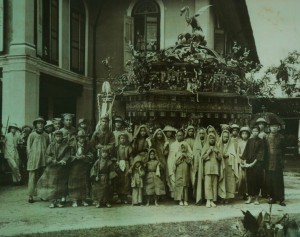
Funeral of Wee Geok Eng Neo, nee Mrs Tan Tiam Tee. Upper Thompson Rd, 1926. (photo courtesy of Alvin Ong)
Funeral of Tan Yong Chuan, died age 29, 26 November 1937, Neil Road. (photo courtesy of Alvin Ong)

Descendants at the tomb of Tan Tiam Tee, holding his portrait during Cheng Beng -tomb sweeping festival, 2012 (photo courtesy of Alvin Ong)

Descendants at the tomb of Tan Yong Chuan, Cheng Beng-tombsweeping festival , 2012 (photo courtesy of Alvin Ong
Miniature cooking pots were interred in Mrs Tan Tiam Tee’s tomb, presumably for her to cook in the afterlife, along with a pearl sanggul, and bracelets. According to my relatives, a set of gold teeth with an engraved heart shape was also found in Tan Yong Chuan’s tomb.
****
Tan Yong Chuan (son of Mr and Mrs Tan Tian Tee) was finally reunited with his wife for the first time in Holy Family Columbarium after 77 years. The columbarium has an unusual regulation that all photos of the deceased must be in color.
No color photographs of the deceased had existed at that time, so with the help of numerous correspondences, scans were digitally emailed, and the photos doctored and hand-painted.
Studying overseas has allowed the artist the space, physically and emotionally, to explore ideas of home and identity. These graves were only re-discovered shortly after the redevelopment plans were announced. The sight of the many abandoned tombs on the artist’s first visit to Bukit Brown had sparked questions about what happened to the descendants of the people who were interred there, which in turn, prompted the artist to explore if there were indeed any family connections to the cemetery at all. Beyond the historical and material significance of the place, it also felt like a site where mystery, the past, and present all came together. Reuniting with the tombs for the first time in many years became an emotional moment for some, and it also made us feel as though we have touched history, an experience that is becoming exceptionally rare in Singapore.
These were ideas that all came together in the painting, which were almost auto-biographical in that they featured vignettes of the artist’s experience with the discovery of the pioneers of Singapore and his roots. One random memory was a trek with Raymond Goh to Seah Eu Chin’s grave; One of the Teochew stone lions guarding the perimeter of the tomb eventually found its way into the picture. Raymond was featured in the early stages of the work, but in the end, this idea of displacement, loss and discovery surfaced in the final version titled, “Moving House”.
This is not the end of the road. There is yet another tomb whose story remains waiting to be told, my maternal great grandfather, Peck Mah Hoe, pictured here. The artist will be heading to the Peck clan temple in attempt to uncover more. And hopefully, there will be more paintings to come.

Stele in Peck clan temple with the name “Peck Mah Hoe” at the top, although the character for “Hoe” differs from the one on the tomb. Photo courtesy of Yik Han.
******
About the writer who is an artist :
Alvin Ong is reading fine art in Oxford, and did architecture at the National University of Singapore. In 2004, he was the youngest winner of the UOB painting of the year award at the age of 16. He had his first solo exhibition at 17, in the presence of His Excellency President S R Nathan.
By Sugen Ramiah
The Qing Ming festival, or tomb sweeping day, is observed by the Chinese worldwide. It is a day for them to pay homage to their ancestors, either by visiting graveyards, columbariams or ancestral tablets in ancestral halls.
The actual day falls either on the 4th ot 5th of April, but families have a window of ten days before or after the actual day to conduct Qing Ming. This year, I was fortunate to have been able to observe Qing Ming in Bukit Brown and other locations.
Qing Ming, has many stories to its origin, but is mainly observed as an act of being filial and for geomancy (feng-shui) reasons. The Chinese believe that the bones of their ancestors and the lives of the descendents are inextricably connected. For abundance in wealth and happiness, firstly, one has to be filial. Secondly, there has to be a good flow of Chi (positive energy) on the forecourts of their ancestors. During the dry season, the foliage clogs the drainage causing an obstruction to the flow of water. During Qing Ming, the drainage is cleared, to allow the flow of water (Chi) onto the forecourt of the tomb. Qing Ming is also a perfect opportunity for extended family members to get together amidst busy work/family commitments.
Descendents set off as early as first light, to wash, sweep, and weed the tombstones. Inscriptions on the headstones are then re-inked using red or gold paint. A stack of coloured paper or a stone is placed on the headstone to signify that the dead is not forgotten. The paper is also scattered on the mound of the grave. This recalls how an emperor from the Han Dynasty in China could not find his parents’ tomb after he returned from war. He was then told to throw five coloured paper into the air and where they lodged, that was the location of his parents’ tomb.
Two sets of offerings are prepared by the families. First set is for the earth deity by the side – a pair of candles are lit, food and incense offered to the Tu Di Gong who is the guardian of the tombstone. Paper money is also burnt as a form of offering.
Second set is for the deceased – a pair of candles are lit, offerings of tea, fruits, favourite food, and longevity cakes are placed on the tombstone altars. Incense sticks are firstly offered to long departed ancestors and subsequently to the deceased. Incense sticks are placed in an urn and sometimes around the mound, and then descendents wait for the deceased to ‘finish’ their meal Sometimes during the wait, incense sticks are offered to neighbouring tombs – recalling the days of the kampong spirit.
Once approval has been given through the moon blocks or coins, offerings of hell notes and silver paper, clothes, shoes and even latest technological gadgets such as the ipads are burnt for the deceased. Sometimes the required items are packed in a paper treasure box, sealed with the name of the ancestor and burnt for them exclusively. To conclude, tea or any form of liquid is poured around the offering to “secure” the area of the burnt offerings, so as to avoid invasion by other wandering spirits.
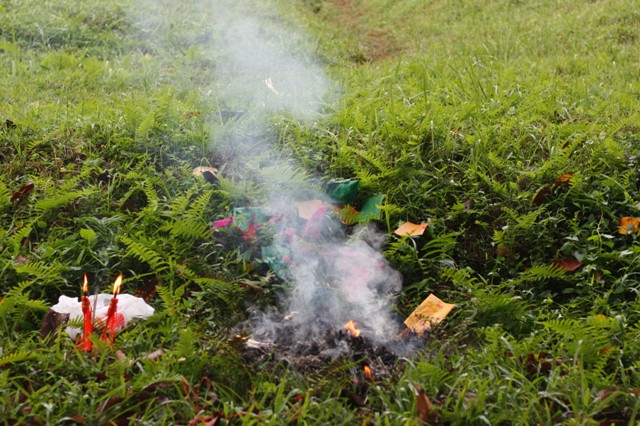
Simple offerings of tea and candy by a woman who comes here yearly to pray for her infant aunt who died during the war. The infant’s burial was not registered so the exact location of plot is unknown.(photo Sugen Ramiah)

The Ng Family has to charter a bus to transport the entire family for Qing Ming (photo Sugen Ramiah)

The Ng Family has to charter a bus to transport the entire family for Qing Ming (photo Sugen Ramiah)

A young boy from the Pek Family, who looks forward to Qingming annually, as he gets to visit the tomb of his Lau Yeh (Great grandfather) and meet his cousins. Photo taken at the tomb of his Great Grand Father at Hill 3 (photo Sugen Ramiah)

Descendents observing Qing Ming in a less taxing environment at the Cantonese Ancestral Hall of the Singapore Hok San Clan Association (photo Sugen Ramiah)
It has been a rewarding experience, to learn from family members on how they up hold traditions that has been handed down to them. All they hope is that these traditions will be carried on by the generations to come and that their ancestors will not be forgotten. I will close with a quote that is close to my heart.
“To acknowledge our ancestors means we are aware that we did not make ourselves that the line stretches all the way back, perhaps to God; or to Gods. We remember them because it is an easy thing to forget: that we are not the first to suffer, rebel, fight, love and die. The grace with which we embrace life, in spite of the pain, the sorrow, is always a measure of what has gone before. ” – Alice Walker
***
Sugen Ramiah is a teacher by training and his interest includes observing and documenting Chinese festivals and rituals conducted by temples.
Read his blog posts on Salvation for Lost Souls here and here
Read about the tombkeepers’ Qing Ming here
by Sudhir Thomas Vadaketh
My wife and I went on a lovely tour of Bukit Brown, conducted by Fabian, lawyer-cum-history buff and very proud “Brownie”, on the morning of Saturday, January 25th 2014.
Before then, the last time I had visited Bukit Brown was in Junior College, when classmates and I would go there for a spooky tipple, more focused on whisky than history.
Only now do I realise how much I have missed. On that Saturday, I learned so much about Singapore’s past. Love the crazy characters: polygamists, guerillas, tycoons, benefactors, sometimes one and the same.
Although I have read much about the Bukit Brown controversy over the years, it is only after visiting that I have a deep appreciation for what we—as a country, society and culture—are about to lose.
Many of us decry Singapore’s rush to development, and GDP-maximising policies. When we speak about, say, high population growth or unnecessary destruction and rebuilding, it can sometimes get a bit abstract, the story lost in numbers and details. A visit to Bukit Brown illustrated the problem to me in a very visceral sense, in a way a thousand articles can never do.
It seems almost perverse that Singaporeans, myself included, will travel abroad and marvel at historical ruins and temples in places such as China and India, yet can stand by and allow a place of such historical import to be ripped from our soul. Our collective Singaporean identity is suffering, slowly, with each grave exhumed. I feel ashamed.
As a writer, I also drew a lot of inspiration from my visit. First, in terms of history, I learned a lot about Singapore’s connections to China and India. I am currently working on a book about the two countries, and Bukit Brown threw up some fresh ideas for stories. For instance, I started to think more about the role of Singapore-based revolutionaries, aside from Sun Yat-Sen, who is oft spoken about, in China’s 1911 revolution.
Meanwhile, it also occurred to me that there are many more interesting intersections of Chinese and Indian culture in Singapore, for instance the Sikh guards who protect the Chinese tycoon’s grave (see picture).
![Naked angel on the right, a scene from Romance of the Three Kingdoms in the middle. And on the left, guarding this Chinese tycoon's grave, is an Indian Sikh. #onlyinMalaya]](http://bukitbrown.com/main/wp-content/uploads/2014/02/Naked-angel-on-the-right-a-scene-from-Romance-of-the-Three-Kingdoms-in-the-middle.-And-on-the-left-guarding-this-Chinese-tycoons-grave-is-an-Indian-Sikh.-onlyinMalaya-1024x768.jpg)
“Naked Angel” on the right, a scene from Romance of the Three Kingdoms in the middle. And on the left, guarding this tycoon’s grave is an Indian Sikh (photo Sudhir Thomas Vadaketh)
Second, in a broader sense, I was also inspired by the greenery, architectural beauty, and solitude that Bukit Brown offers. Artists in Singapore often bemoan the city’s dry, insipid environment. A walk through Bukit Brown left me rejuvenated, in a way that the artificial icons like Marina Bay Sands and Gardens by the Bay will never do.
Exhumations are slated to be completed by the end of this year. For those of you who have yet to visit, please do. Especially those with children. Do take them—who knows what will be left of Singapore when they’re older?
(For more on my book about China and India, tentatively titled From Kerala to Shaolin, please see here.)
About Sudhir Thomas Vadaketh:
After seven years at The Economist Group, in early 2013 Sudhir left the professional world to write full-time. His literary interests concern the way grand socio-political systems influence ordinary people’s lives, their worldviews and their interactions with each other. He hopes to follow his first book, Floating on a Malayan Breeze, with narratives on Asia’s other great societies—he is currently working on a book about China and India. He has written for a variety of publications, including The Economist, The Straits Times and Yahoo! News.
Sudhir blogs at sudhirtv.com
By Serene Tan
Not long after my dad passed away in 2011, the government announced plans for an 8 lane highway that would cut through Bukit Brown, and graves in the way would have to be exhumed.
The news of the highway triggered a memory. The last time I visited my grandpa’s tomb was more than 40 years ago when I was a young girl. I could vividly recall my grandpa’s tomb at Bukit Brown. Concerned it might be affected, I realised it was time to visit him.
I arranged with my cousin to visit the grave for the ‘Qing Ming’ festival the next year, 2012. It was a relief to learn that his grave was not staked for exhumation. But to my dismay, the tomb was in a dilapidated condition. The tomb had been neglected for more than 15 years after my dad suffered a massive stroke which left him paralyzed and wheel chair bound.
It dawned on me then, that I now had the responsibility to carry on my father’s duty to ‘sweep’ grandpa’s tomb during the ‘Qing Ming’ festival. His tombstone spoke to my roots.
Inscribed on the tombstone was my ancestral hometown , Kimen, my grandfather’s death date, 1937, and the names of his children. My father was the only son. For the first time I came to know my father’s birth name 陈天吉, Tan Tien Kiat, inscribed on the tomb. My grandpa passed away when my dad was only five and dad changed to a simpler name, 陈 亞 旺, Tan Ah Ong
I arranged with a contractor to renovate my grandpa’s tomb, and before work started, I decided it was also time to visit my ancestral home in Kinmen, Taiwan . Unconsciously, I think I was seeking the blessings of my father and grandfather.
My grandpa Tan Teow Meng (陈 朝 明 )left his home in Kinmen, more than 100 years ago. In Singapore, I was told he worked as a lorry driver and died because of a bout of high fever.
My father had attempted to visit his ancestral home, thrice in the 80s. Kinmen is a small archipelago of islands and at that time was under a military administration because of fighting with China. The only means of transport then was by military helicopter. Visitors to the island were restricted but because Dad could claim to be descended from his ancestors in Kinmen, getting permission was not the problem. Each time, it was bad weather which prevented my father’s flight on the helicopter from taking off from mainland Taiwan.
He was so close and yet so far. I felt deeply the pain of his disappointment. Dad subsequently passed away, without fulfilling his dream.
It was in my ancestral village of Houshan (后山), now known as Bishan, that I learned my father had contributed funds to two temples. His name was inscribed on the list of donors for both temples. This one is from the smaller village temple 陈氏宗祠
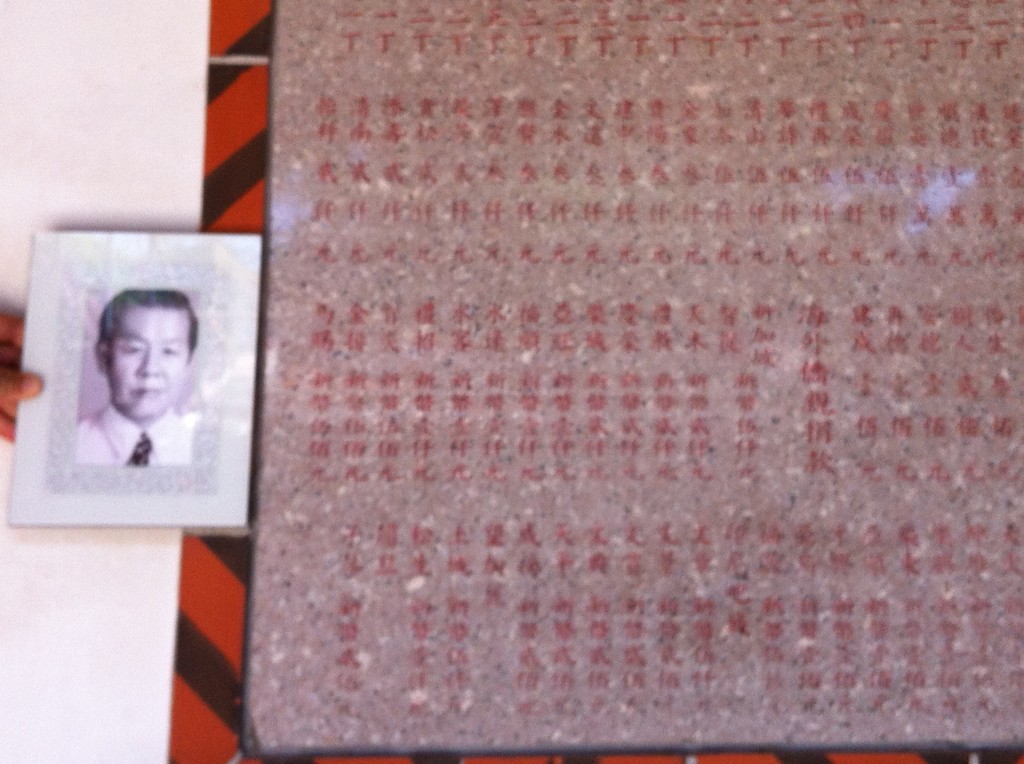
I placed my father’s photo as close as I could to the inscription of his name among the temple’s donor list (photo Serene Tan)
My heart swelled with pride. There is an old Chinese saying “Drink Water, But Remember the Source”- “饮水思源” . My father, although he was not able to visit his ancestral home, never forgot his roots.
The family home and land in Kinmen, remains abandoned. But at home in Singapore, my grandpa’s tomb has been rebuilt with granite stone and fresh inscriptions in gold dust. My grandpa had a humble life his son – my father – worked hard and became a successful business man and never forgot his father. I have always admired my father for his work ethic and persistence.
So as I marked Qing Ming at my grandpa’s new “home” after my visit to Kinmen, I felt happy and blessed to have been able to accomplish my father’s dream of visiting our ancestral home.
***
My journey to my ancestral home in Kinmen in a photo essay.

My ancestral home and land, abandoned. Relatives I met told me, the home was occupied by troops during the conflict with China and they also dismantled the wooden structures to build their bunkers. ( photo Serene Tan)
The village temple 陈氏宗祠
The temple serves residents nearby to offer prayers anytime as and when they deem necessary. (陈氏宗祠)
My father also donated to the larger Tan clan ancestral temple, 陈氏 家廟. Unlike the village temple, it’s opened only for certain festival celebrations and entry restricted to only male descendants. I was privileged to be granted permission to enter, as an exception.
- In the courtyard of the Tan temple, holding a photo of my father (photo Serene Tan)
My father’s name 亜 旺 on the donors list.

4th from left is my father’s name on the list of donors from Singapore to the Tan temple (photo Serene Tan)
Meeting my relatives for the first time, I learned my great grandfather’s name is 陈 正. So he is the earliest of my ancestors I have come to know.
I will be marking my father’s third death anniversary at the Singapore Buddhist Lodge, 17-19 Kim Yam Road on 23 Feb 2014 at 10 am. Friends and relatives are welcome to join us in prayers.
A personal account by Aylwin Tan who witnessed the exhumation of his grandfather and aunt at Bukit Brown on the morning of Wednesday, 8th January,2014.
***
I received a phone call from the exhumation office about 1.5 hours after I had registered. Picked my Dad up and went directly to the gravesite.
The green tentage is that of my aunt Tan Siok Hwa (aged 10) and the grey is my grandpa, Tan Cheng Moh. Both were killed during a Japanese raid; a bomber scored a direct hit on the bomb shelter where my grandpa had put his entire family, including his close relatives. Apparently, grandpa’s thinking was that they should all stick together and if they all died, so be it.
Their funerals were carried out in haste. A number of traditions were abandoned for fear of being caught out in the open by the Japanese bombers e.g. mourners alighting to perform rites at every bridge along the way to the burial ground.
Mr Lee (the gentleman in yellow boots seen in the first photo) told me that the coffins and remains had disintegrated and had merged with the soil. Not surprising, given that they had passed about 70 years ago. The gravediggers gathered some earth and put it in plastic bags for the purposes of cremation.
I was curious to know how the gravediggers knew that they had dug deep enough to reach the remains. Mr Lee explained that the gravediggers would know once they reached a flat surface as this was the bottom of the coffin.
The gravediggers were also able to tell that my aunt died when she was a child. If you look at my aunt’s grave, you can see a ‘step’ indicating that the coffin was shorter than an adult’s.

The grave of grandfather dug until a flat even surface was reached, where the coffin had been laid (photo Aylwin Tan)
I was worried that Dad would not be able to negotiate the uneven terrain to the grave sites but the path worn out by the gravediggers proved manageable. Mr Lee told me that these gravediggers are the last of their kind in Singapore.
Dad spent some time telling his story to the gravediggers while I sorted out with Mr Lee the items found in the graves. Dad’s chair was provided by Swee Hong, the company that won the exhumation tender, a testimony to their planning and attention to detail. Also, you can see how they used the umbrellas to shield the boxes from the sun.

Umbrellas shading the remains from the sun as required by traditional practices. Aylwin’s father (seated) chatting with the grave diggers (photo Aylwin Tan)
The gravediggers recovered a chain and part of a bowl from my aunt’s grave. The bowl was probably used in the funeral rites. Mr Lee asked if I would donate them for research. I shall have to ask my elders’ permission first.
My grandpa’s grave yielded a bullet and a piece of metal which looked like a cone with the top portion cut off. I had to surrender the bullet as it was not a spent round. The gravediggers surmised that the metal piece came from the bomb but I wonder where the bullet came from. Dad said that the metal piece was not the cause of grandpa’s death; a beam had fallen on grandpa’s head and cracked it open. Death was instantaneous. The sight must have been extremely traumatic for the family. Dad was only 11 or 12 then.
One unexpected development came about when Dad suddenly said that my great grandfather was also buried somewhere in Bukit Brown. Dad did not know his name or the location of the grave site. Apparently, only one of grandpa’s brothers had this information and he had since passed. According to Mr Lee, great grandpa’s remains will be exhumed and disposed of if unclaimed after a period. Mr Lee also said that there was still hope if someone in my family could remember great grandpa’s name as the tombstone would surely state grandpa’s name. I’ll try my best to ask my relatives but am not very hopeful.
I will miss the 2 “Yodas” guarding grandpa’s grave. The other 2 guards look kind of effeminate.
The left panel of the tombstone lists grandpa’s sons and daughters. Dad is ‘Geok San‘, which means ‘jade mountain’ in Chinese. In accordance with Chinese tradition, the sons and male cousins in the same generation have the same identifying name. In my Dad’s generation, the name is ‘Geok‘. In mine, it is ‘Wee’, which means ‘great‘ in Chinese. I understand that these names are predetermined by the Chinese Almanac.
The exhumation ended on a quiet note. After I had given written confirmation of the items from the graves that I had retained, I was given printed photographs of the two grave sites and that was it.
I was very impressed with the professionalism of the Swee Hong staff. They were attentive to my requests and sensitive to religious aspects of the exhumation. They worked fast but were in no hurry, allowing claimants all the time they needed to carry out their religious observances. Thanks to them, the exhumation process went smoothly.
– Aylwin Tan-
Additional Information : Both grandfather and aunt died on 18 Jan 1942.
Grave of Tan Cheng Moh 陳青茂 #769 (photo credit The Bukit Brown Cemetery Documentation Project )
Grave of Tan Siok Hwa 陳淑華 #763 (photo credit The Bukit Brown Cemetery Documentation Project)
Editor’s note: We would like to thank Aylwin Tan for giving us permission to reproduce his personal account on the blog. If you are a descendant who has ancestors staked for exhumation, please share your story with us.
Email us: a.t.bukitbrown@gmail.com
Sharing our feedback on Bukit Brown in the Draft Masterplan. We are grateful to all who wrote and shared your feedback with us. Without your support, awareness of Bukit Brown would not be where it is now – not just a talking point but- a rallying point to enrich our identity, a respect for our heritage and a Singapore we can all call home. We are humbled.
***
“We met as volunteers and in response to a groundswell of feedback after the announcement of the plan for Bukit Brown, formed All Things Bukit Brown as a loose group of volunteers to support amateur historian Raymond Goh, people who might want to contribute time, research, translation skills, etc to raise awareness of the value of Bukit Brown. We subsequently created the blog, All Things Bukit Brown, (http://bukitbrown.com) and started organising social events onsite in December 2011 to gauge interest in Bukit Brown as a destination. We were happily surprised by the enthusiastic turn-out for 3-4 events and started guiding tours onsite with whatever knowledge we received from February 2012.
Since then, we have cobbled together a dozen committed volunteers who research and/or guide. We are pleased to report that in that time, we have guided 10,000 people to Bukit Brown, including secondary schools and tertiary institutions, overseas academics, and participants from the Lee Kuan Yew School of Public Policy and the Civil Service College. Former Foreign Minister George Yeo was an early visitor guided. We have also guided grassroots communities led by their MPs, including DPM Tharman Shanmugaratnam and Sylvia Lim. This weekend, Minister of State for National Development Desmond Lee will bring his grassroots community there too. Groups which have come include the elderly Chinese, the hearing impaired and the docents from the Sun Yat Sen Nanyang Memorial Hall , National and Peranakan Museums.
Bukit Brown has already inspired the students of Pioneer Junior College to co- write the book “1911 Revolution: Singapore Pioneers in Bukit Brown” which was launched last Friday at the Sun Yat Sen Nanyang Memorial Hall. On our part we have applied for a grant from the National Heritage Board to put together useful information we have gathered over the past two years as a guide book to Bukit Brown.
Imagine this, a grassroots effort to bring 10,000 people to a site without any amenities – no toilets, drinks stalls, resting stations, shelter from the rain, marked trails or trash bins. How much more can we do together when we put our resources together? Give us a chance.
As Singaporeans, we are very proud to share what knowledge we have and encourage interest in Bukit Brown. We have met many engaged Singaporeans, academics, students, tourists, photographers, artists, etc – a diversity of participants who have reinforced the notion that Bukit Brown is more than a cemetery but a public space that draws different communities there for different reasons. We are witness to the grassroots movement which has built up a valuable community with a strong outreach component. We hope that you see this element of a place in fostering communal ties and meaning. These are valuable to building a strong and cohesive society, people rooted to their identities and bringing Singaporeans and residents together in a meaningful way. It is not something that can be easily replicated without the actual space that first drew us together in the first place.
It is this community-building effort that also drew the attention of the World Monuments Fund in awarding Bukit Brown World Monuments Watch status. We are proud of this international recognition and hope that one day, we can twin Bukit Brown with the Botanic Gardens for a unique world heritage site unmatched anywhere else in the world. That it is set in such lush and spectacular settings makes Bukit Brown all the more special.
State recognition of Bukit Brown’s intrinsic value will lift tourist awareness of Singapore in a different way, opening up ideas (and revenue streams) for education tourism, battle site tourism, cultural tourism etc in the same way medical tourism has brought international attention (and revenue) to the world-class medical services available in Singapore. Already, heritage associations in the region, specifically Penang and Malacca, have displayed keen interest in Bukit Brown and we hope there would be attendant tourism effects for the better good of Singapore and her neighbours. Not only would Singapore benefit from state recognition of the heritage value of Bukit Brown, we can work together with tourism agencies around the region and reap the benefits of good neighbourliness and joint tourism campaigns. Indeed, we are not short on ideas. We ask for the state to demonstrate leadership in this.
We hope you will protect Bukit Brown and Singapore’s historical, cultural, wartime and natural heritage for future generations, and will have an open discussion on how best to protect Bukit Brown and other heritage and nature sites affected by the proposals in the URA Draft Master Plan 2013. National development includes supporting our Nation’s sense of identity and belonging across generations in addition to infrastructure.”
Claire Leow & Catherine Lim
A call was made to the community to provide feedback to the Ministry of National Development (MND), to preserve Bukit Brown as a heritage site for future generations in the draft Master plan 2013. The closing date for feedback is 19th December 2013. For those who don’t know how to begin, there is a template available to guide you here. We encourage you to copy the email to your MP.
To those who have written, We Thank You. Some of you have shared your letters with us. We gratefully reproduce extracts with your kind permission, with the hope it will inspire others to write in and give their feedback.
If you wish to share your feedback with the community, please bcc your letter to MND to a.t.bukitbrown@gmail.com
———————————————————————————————————————————————————–
“We are custodians of our country’s heritage not just for ourselves but for our future generations. It is important that they continue to see for themselves how respect is being shown to our forebears and learn the very real lesson of conserving our roots even, or especially in the face of rapid urban development. Precious “history lesson materials” like Bukit Brown, once lost, may never be recovered. Let no regret come about.”
***
Eugene Tay
“The biggest threat to Singapore is apathy, and when Singaporeans do not feel a sense of belonging and are not bothered with what goes on here, then Singapore is in trouble. For Singapore to survive and prosper in the long term, it is necessary to have more opportunities in preserving our shared memories and creating our shared vision. And preserving Bukit Brown is an excellent opportunity that enables Singaporeans to feel that they belong here by remembering our past and creating our future.
Bukit Brown tells the stories of our forefathers who built Singapore, and creates opportunities for history education and discovery. The cemetery connects Singapore’s past and present, and allows us to understand that Singapore’s success is built up by our forefathers’ sweat and tears, and should not be taken for granted. We should preserve Bukit Brown because it helps us remember our past and keeps us rooted to Singapore.
Bukit Brown presents the opportunity for transforming the cemetery into a world-class living outdoor museum or heritage park. If this transformation adopts a bottom-up approach and with stakeholder engagement, it would allow us to come together, plan and work towards a future Singapore where heritage, nature and our economic needs can co-exist. We should preserve Bukit Brown because it enables us to work together and build bonds and resilience, and to create a space where our children and their children can enjoy and be proud of.
Singapore is a young nation and needs more common spaces like Bukit Brown to remind us how we got here and why this is home, and to create opportunities for building our future social resilience.”
Joyce Chew
“I am a fourth generation Singaporean. My great-grandfather, Chew Boon Lay, was one of Singapore’s very important pioneers.
In April 2012, my parents and I, along with my husband who is English, and our 2 children, discovered where my great-grandfather was buried in Bukit Brown. Thanks to a Straits Times journalist who did a photo-editorial on several important pioneers’ descendants, a photo shoot was conducted at the site of Chew Boon Lay’s tomb.
My parents who had not been to his tomb in more than 20 years came along as well, as did many of my extended family of cousins, uncles, and other relatives. Despite my parents both being aged and not able to walk or see well, they both made the uphill trek to Chew Boon Lay’s tomb in the dark as a huge storm was looming. That was such an important day for them and my family. I was re-acquainted with many relatives and met some whom I had never even met before. We have had several family gatherings since and as such, our April 2012 ‘reunion’ at Chew Boon Lay’s tomb in Bukit Brown served as a very important point of re-connecting with long lost relatives.
My father who is 83 was so elated to have been able to visit his grandfather’s tomb and pay respects to him again after such a long period of time. He was even happier to meet his many nieces, nephews, grand-nieces and grand-nephews, many of whom he had never met before. My siblings live abroad and when they returned to Singapore, I brought them to my great-grandfather’s tomb. All of them were so amazed at how peaceful and beautiful Bukit Brown is, but more importantly they were so happy to be able to visit our great-grandfather’s tomb for the first time.
Having reconnected with my Singapore roots via my great-grandfather’s tomb, I feel so proud to be a 4th generation Singaporean of an important Singapore pioneer who had such humble beginnings and contributed much to Singapore’s growth and prosperity. My children are both Singaporean and English and I want them to grow up feeling connected to Singapore and to be able to trace their roots in Singapore back to my great-grandfather. It was important for me that they visit his tomb and pay respects to their great-great-grandfather and to feel proud to be his descendants. I want them to be able to do this when they are older and when I am no longer around….such a connection in our young country that is forever trying to modernize and improve itself is, for me, one of the most important things if we want our children to have roots in, and feel connected to, Singapore.”
***
Other than the Bukit Timah Nature Reserves, Bukit Brown is a another place where I can bring my families out to Experience nature in a SAFE environment. National Parks are wonderful but they do not give the sense of one totally immersing in Nature.
“We are in a jungle.” my 6 year old boy Isaac said that with excitement when I brought him to the Bukit Brown. We have built too many shopping malls and what values are we cultivating when weekend we see Singaporeans crowding the malls and yet complaining that we are bored to death? Our souls are not fed with Nature but shopping malls and how would that make us as a Nation? We fly out of the country during school holidays to visit other country’s nature while we are destroying one in our own backyard? An article written by a 12 year old lavanyaprakash on Bukit Brown reminded me how important it is to preserve such AUTHENTIC nature and to educate Singaporeans on Nature Outings. I want my children’s generations to be able to experience this Nature and not just Bukit Timah Reserves or other man made National Parks. Thus, not only it is a National Heritage to be preserved, it is a World Heritage to be preserved!”
Other than the Bukit Timah Nature Reserves, Bukit Brown is a another place where I can bring my families out to Experience nature in a SAFE environment. National Parks are wonderful but they do not give the sense of one totally immersing in Nature. “We are in a jungle.” my 6 year old boy Isaac said that with excitement when I brought him to the Bukit Brown. We have built too many shopping malls and what values are we cultivating when weekend we see Singaporeans crowding the malls and yet complaining that we are bored to death? Our souls are not fed with Nature but shopping malls and how would that make us as a Nation? We fly out of the country during school holidays to visit other country’s nature while we are destroying one in our own backyard? An article written by a 12 year old lavanyaprakash on Bukit Brown reminded me how important it is to preserve such AUTHENTIC nature and to educate Singaporeans on Nature Outings. I want my children’s generations to be able to experience this Nature and not just Bukit Timah Reserves or other man made National Parks. Thus, not only it is a National Heritage to be preserved, it is a World Heritage to be preserved!”
***
Ang Hock Chuan
“As recently as September 2011, Bukit Brown was just another cemetery to me. I only remember it as the place I learnt to drive and as the place my grandfather was buried.
My father visited his father’s tomb every Ching Ming till an illness made it difficult for him to walk in that terrain. He had prepared for the eventuality of exhumation and already bought a niche for my grandfather. Unfortunately, I stopped following my father to visit years ago and forgotten where my grandfather was buried.
When my father passed away a few years ago, I became interested to look for my grandfather’s tomb. It would be the last thing I could do for my father to ensure his father’s remains are properly taken care of.
When I heard the news about the proposed highway, there was an urgency to locate my grandfather. I started to search for people who can help me locate him and stumbled on a group of volunteers sharing about Bukit Brown.
My initial interest was to look for my grandfather’s tomb and determine if it would be affected so I can make the necessary arrangements to relocate him.
I joined their guided tours in October 2011. That opened up my eyes to the rich heritage and history contained in Bukit Brown.
Over many visits I was also introduced to the rich bio-diversity and wildlife thriving in this habitat. Whilst I enjoyed listening to the birds in the woods, I was never an avid bird-watcher. But now, I keep a look out for the birds when I am there. I have seen uncommon and endangered species like the Changeable Hawk Eagle, the Red Jungle Fowl, the Greater Coucal and still learning each day about the special flora and fauna of Singapore there.
Bukit Brown turned into a living museum and classroom for me. History came alive. Our cultural heritage is enshrined here. A rich bio-diversity thrives here. It has an aesthetic beauty not found in our man-made parks. I count it my good fortune to have learnt about and visited this wonderful piece of our heritage before any wanton destruction takes place.
For these reasons and more, I hope to see Bukit Brown preserved, for our children’s and grandchildren’s sake. Once lost, lost forever.”
***
Alvin Lee
“We need not look any further than to Bukit Brown when we try to form our Singapore Identity because it is there for all to see. It is a living museum of our rich history that reminds us that our forefathers were migrants from various lands who decided to root themselves here in the Straits Settlement of Singapore, and we are their proud offspring. The fact that Singapore started as a migrant nation also helps us understand and welcome those who come here today, like our forefathers, to seek their fortune and make Singapore their home.”
Arielle Ng Rae
As a local student and youth, I finally took the time out today to join one of the tour groups organised by SOS Bukit Brown today, which I have been wanting to do ever since my ‘A’-levels finished. I was pleasantly surprised with the beauty and heritage of the site, but I was also incredibly saddened. The tour guides were very passionate and knowledgeable about local heritage, and the knowledge I gained today about Singapore and its roots, about how the locals worked together with a myriad of other races to form modern Singapore, about the roots of our unique culture that we often take for granted, made me the proudest of Singapore that I have ever been.
Through the tour, I finally appreciated exactly what it meant to be a melting pot of diverse cultures– how our customs came to be and as a result, how unique we are, and, ironically, the beauty of globalization in contributing to our shared heritage.
I plead with the most earnest and sincere heart, that you will protect Bukit Brown, for the sake of Singaporeans, who are fast becoming disillusioned with this city-state. This tour has done nothing but cement my love for Singapore and my pride for it, and I want many of my peers to feel the same. It is perhaps the natural state of the cemetery, and the untouched beauty of the landscape that lent this genuine connection and pride, but whatever it is, Bukit Brown cemetery has proven to be a beautiful reminder of what it once meant to be Singaporean, and what it could mean for future generations to come.
***
Ian Chong
“Bukit Brown has helped me achieve a better understanding of a history of a part of Singapore’s local history, and has helped me gain a stronger sense of where our nation has come from as a community. It is a reminder of where our society came from and the sacrifices earlier generations made. I hope my children will be able to experience the sheer physicality of our roots, as well as Singapore’s natural heritage. The flooding in Singapore over the past few years, including the Bukit Timah and Thomson areas that are downhill from Bukit Brown, reminds me of the importance of having natural green spaces near already built-up areas.
Moreover, during the periods of heavy haze earlier in 2013, green areas like Bukit Brown were least affected. Singapore needs natural green lungs like Bukit Brown.”
***
Casey Ong
“It is OUR oldest part of history. My grandfather’s grave at Bidadari was long gone more than 10 years ago to clear his “resting place” for more housing developments. Passing by that stretch of road gives us no connection anymore. Even though we have never met our grandfather before, we used to pop by his grave as a kid just to say “hello”, or just to remember how he looked like before by the photo on his grave. We felt the root of our roots. We felt proud of ourselves in some way too because of where we came from. Now I understand why history is such an important part of life.
So, please do not do to the oldest cemetery in Singapore, the Bukit Brown Cemetery what the government had already done at Bidadari. How much more land or our past that you want to “sacrifice” for economic development? Bukit Brown CAN BE an economic source if it can be converted to a tourist area, natural reserve etc. We do not want more roads, please.”
***
Kerry Cracknell
“I am a British citizen who has settled in Singapore with my family and now call it home – and I am proud to do so. My daughter was born here and we are happy here. However, my husband and I are trying to teach our children about the importance of preserving our environment and our natural heritage. We often tell them “once it’s gone, you can’t get it back” and we quote the Native American Cree prophecy “When all the trees have been cut down, when all the animals have been hunted, when all the waters are polluted, when all the air is unsafe to breathe, only then will you discover you cannot eat money”. It is heartbreaking to think that in a few years’ time, such a place as Bukit Brown – with its natural, historical and cultural significance – might be concreted over. Please, please consider saving it for our future generations.”
***
Philip Chai
While I have only set foot on Bukit Brown once, I am fascinated by the deep treasure trove of history it is. It is an unbias holding place of history as alot of our ancestor laid to rest. I remembered when I was young, I have to walk through Choa Chu Kang and there was this cemetery that fascinated me as it has very interesting tombs. I never get around to know it as it made way to development since. It would be a pity if we keep making concession on preservation in the name of progress as that would be a very up-rooting experience. No pictures or archive can replace the actual tombstone and the serenity is irreplaceable.
***
Cathy Tan
“I am the third generation of Kinmenese immigrants. My great grandparents were once buried in Bukit Brown cemetery. My father, Mr Tan Kok Meng 陈国民, had served as board member, treasurer and subsequently as vice chairman of Kim Mui Hoey Kuan 金门会馆 from late 60s to 80s. During that time, he organized many cultural activities and exchanges, including hosting the Asian literary festival. He had also proposed to setup a center to store valuable historical material of Kinmen and their diaspora. The subsequent setting up of the Cultural and Historical Resource Center 新加坡金门会馆文史资料中心 in 2003 and the publication of “I came from Kim Mui” 《我从金门来》in 2006 (which my father was one of the interviewees) were some of the visible fruits.
Now that my father has passed away for four years, I have kept this book close to my heart. My daughter recently used it to write a social science essay about her root. My father, after escaping the turmoil of war had decided to make Singapore his permanent home. Along with many others who came to Singapore between 18th – 20th century, they have contributed to who we are today. Even though we are still a young country, we do have our own history. And the major part of it, is inscribed on the tomb stones in Bukit Brown Cemetery. ”
“My daughter and I visited Bukit Brown and were deeply moved by the heritage and biodiversity of Bukit Brown. Lavanya,who’s my 13 year old daughter wrote about Bukit Brown in her blog here http://mynatureexperiences.
***
Darren Koh
Singapore is not only about concrete buildings and integrated resorts: it has in Bukit Brown a huge repository of stories which when told, make people aware of Singapore as a hub of trade commerce and culture in Asia all this long time ago. It is so much easier to show a human Singapore when you bring back to mind the human stories told every week by the Brownies on their tours – these are stories that make this place, home.
Conservation does not mean no development
One point I wish to stress is that conservation does not mean no development: just as we can develop around an existing building and incorporate its uniqueness into our plans, it should be possible to conserve Bukit Brown without halting development. What is needed is more diverse, out-of-the-box thinking. For instance we will still need parks in Singapore – well, we have one already. While the older generations have reservations about going to a cemetery for a walk, the younger set do not, and Bukit Brown is already being used as one. Why not develop it’s potential? Here is a place where amidst the stones stories of old Singapore lie. The Brownies have bring the stories to life during their tours, which as noted above, have been receiving a lot of tourist publicity through word of mouth and social media. If self-funded volunteers can do so much, how much more can they achieve if they had help?”
“Each time I pay a visit there, it stirs up emotions from a sort of deep-seated ‘spiritual’ wellspring which I did not know I have. A spiritual awakening of sorts. Ironic isn’t it from a burial ground?
Maybe, it’s the tranquil surroundings, the wonderful tales of an almost forgotten past kept alive by the elan of the volunteer guides, or could it be just the spirits of the ancestors channelling….. I would often end up going away asking myself: How is it that we have neglected our past? Why? Who are we as Singaporeans? What keeps us going? What inspires us? Do we have a national soul? Did we start any fire or if there are any embers left? And so on. So here are some of those rambling thoughts…….after my latest ramble over the hills of Bukit Brown.”







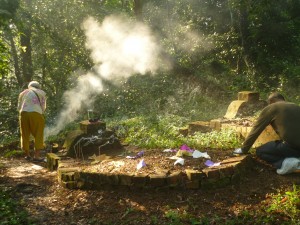




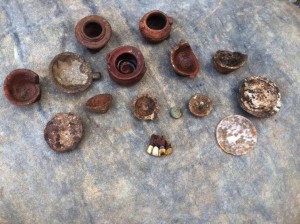





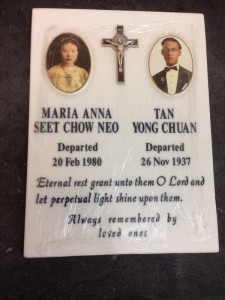
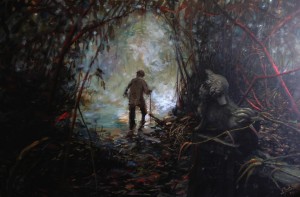



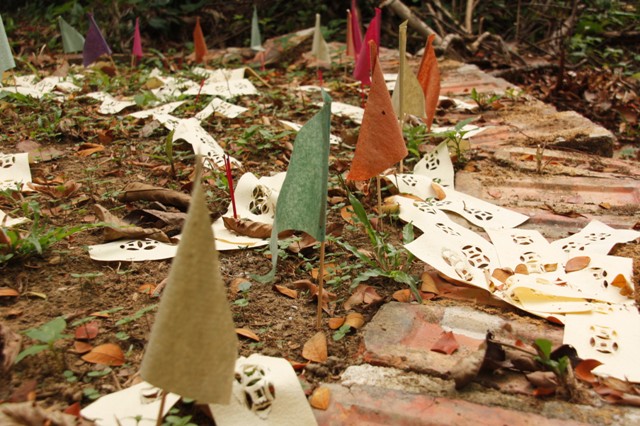




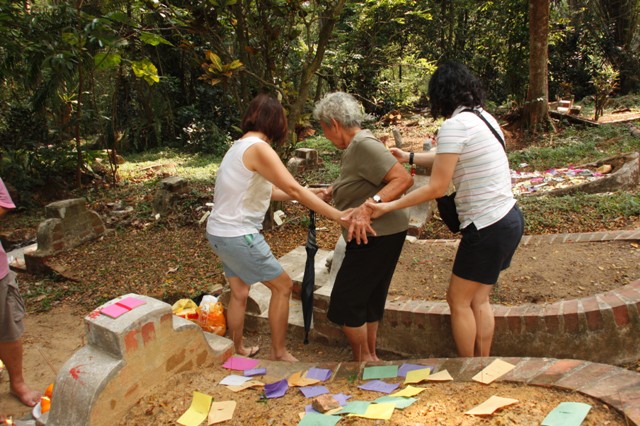

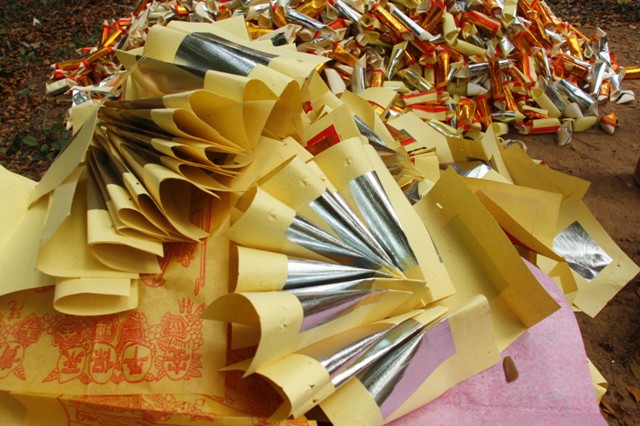



















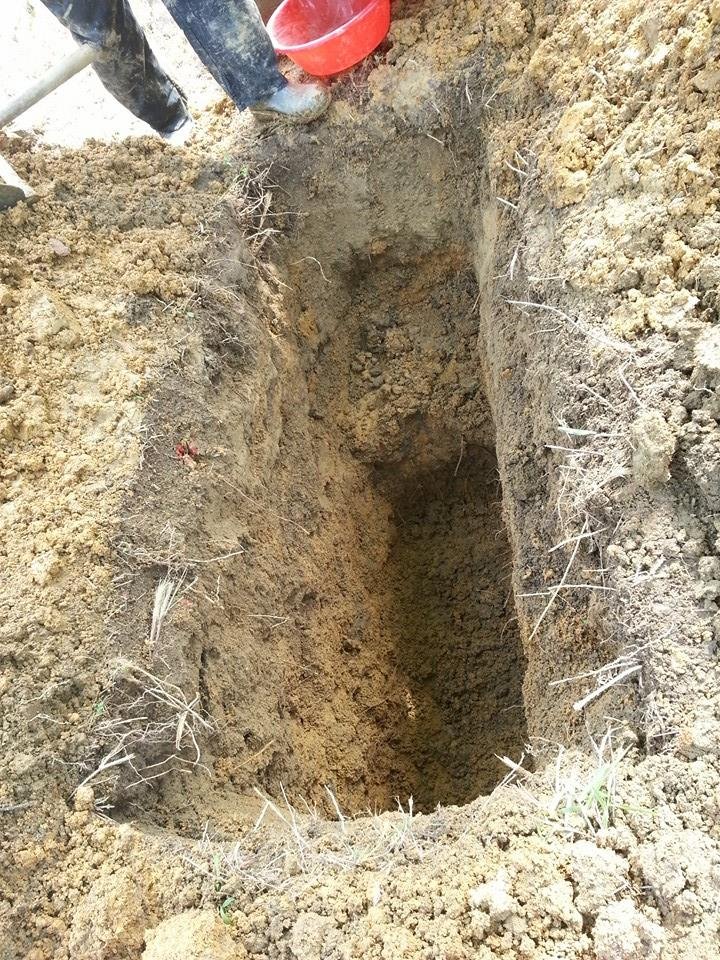









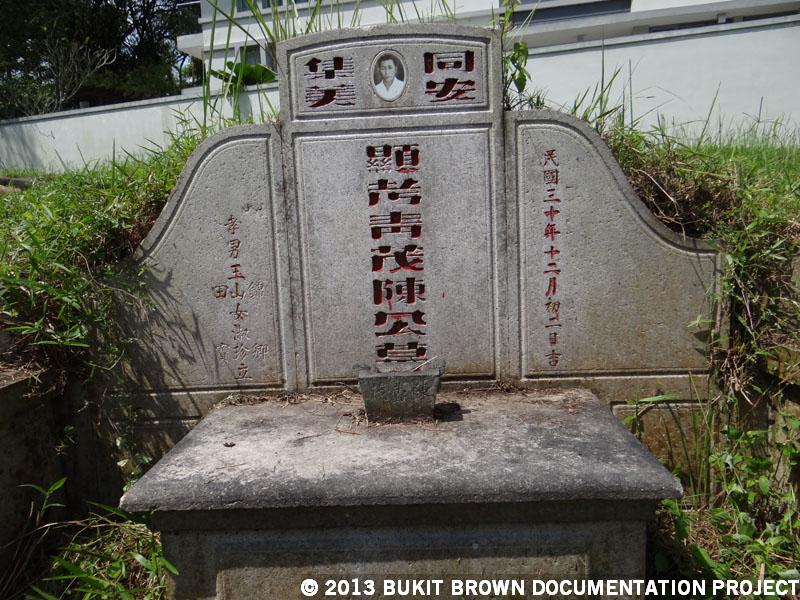



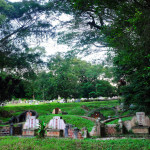










Recent Comments